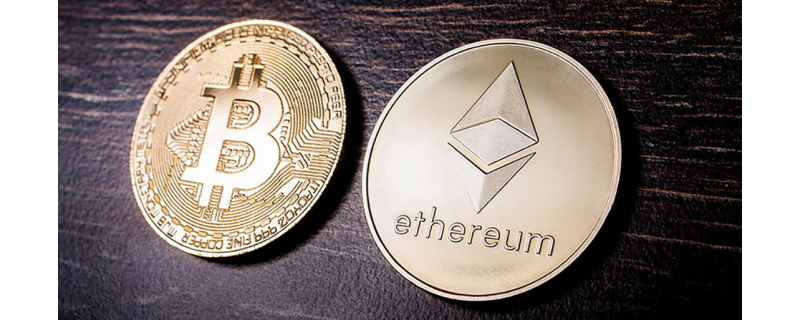In an unstable political and economic situation, people began to think about how to save their savings. The issue of long-term storage of funds is especially relevant. Traditional deposits and loans offered by banks have a number of disadvantages. They are sometimes uninteresting to both customers and the financial institutions. But the main argument against deposits and loans is the interest rate. Even now, when amid the aggravation of the political and economic situation, banks have raised interest rates on deposits, they cannot be considered a profitable and safe way for long-term storage. Cryptocurrencies can be a great alternative. Why? We will analyze this in detail in the article.
Cryptocurrency alternative to traditional deposits
The stable operation of a financial institution directly depends on its deposit policy, since it is with the funds raised that the bank can carry out operations for customers. This is not only a question of liquidity and profitability but also of the viability of a financial institution. The main problem is that the proposed terms of deposits and loans do not seem particularly attractive to depositors.
The main principle of operation of all commercial banks is to provide users with different options for deposits. Considering the fact that deposits can be made not only in national but also in foreign currencies, the use of digital assets or at least a central bank digital currency (CBDC) would be quite logical. However, such prospects should not be expected in the near future, at least in Russia. At the same time, cryptocurrencies are becoming an increasingly popular tool for investing. The cryptosphere can offer many interesting and much more remunerative options for deposit products.
Staking and crypto lending
As for alternative options, they are staking and cryptocurrencies. In today's crypto space, these concepts are often confused. However, they have fundamental differences both in terms of the goals pursued by the borrower and in terms of registration conditions. It is worth noting that they are quite similar to deposits and loans offered by traditional banks:
- Cryptocurrency can also be given for a fixed time at a fixed interest rate. The exchange does not necessarily act as a borrower, it can be another user applying a peer to peer system;
- It is possible to store cryptocurrency on a wallet with interest payments. The terms can be flexible and the rates are very variable.

Staking is, in fact, the same as mining, only for it you do not need to spend money on expensive equipment. It is enough to keep funds on a wallet and join the pool of validators (nodes that confirm the creation of new blocks in the network). As for the rate, it directly depends on the popularity of the pool and the demand for these services. The more validators in the pool, the higher the percentage you can count on.
On crypto lending platforms, users can borrow funds from each other, while the service acts as an intermediary between them. In this case, the user can provide / take a loan not for a year, but for a flexible period. Also, unlike traditional deposits and loans, there are no limit restrictions in the cryptosphere and a large selection of assets.
What should an investor choose?
So what should an investor choose as an alternative to traditional deposits and loans? To understand the issue in more detail, we asked experts whether staking and crypto lending could be considered a full-fledged replacement for traditional banking services, as well as how they are more profitable and what is more suitable for saving and increasing funds.
Mikhail Epishkin, Director of Strategy for VNX, believes that staking and crypto lending can be called an alternative to traditional deposits, but with a big reservation. Deposits or bonds in the world of traditional finance, crypto lending, staking and other instruments in the decentralized finance market bring passive income. In this, the tools are similar, and from this point of view they can be alternatives to each other, but otherwise they differ significantly. Deposits in traditional finance are quite uniform. Yes, there are differences in banking standards from country to country, but the main principle is the same: the bank attracts liabilities (settlement accounts, deposits, etc.) and at the expense of them, forming a reserve from its own capital, increases the assets (secured and unsecured loans to individuals and companies, overdrafts, guarantees, etc.). In this case, the rate on deposits depends on interest rates on loans and the demand for them, and the safety of deposits depends on the skill of bankers to issue loans to reliable borrowers, to form reserves correctly and in a timely manner, etc.
According to the expert, lending platforms can be considered the closest analogue of deposits in the decentralized finance (DeFi) market. The first and largest of the platforms work on the model of supersecured loans. In order for the user to borrow one asset, for example, in the amount of $100, he needs to deposit another asset as collateral in the amount of $150. But there are no regulations in DeFi, and the principle of operation of one lending platform can be very different from another. So, for example, one platform can accept only "quality" assets as collateral, maintain a high collateral coverage ratio, segregate the risk of different collaterals, and another platform, on the contrary, can accept less reliable assets as collateral, pool risks and issue loans with a small discount from the value of the collateral.
Staking also allows you to receive passive income from crypto assets, but these funds are not lent to borrowers to receive interest, but are used in the Prof-Of-Stake algorithm to validate transactions on the network. Blockchain validators produce blocks that include transactions and validate them; without them, the work of the blockchain on the Prof-Of-Stake consensus mechanism would be impossible. For this, they earn commissions collected from the network. Validators' good faith is guaranteed by their staking assets, which can be penalized if the validator does something wrong. There are very popular applications that allow small investors to participate in this process through collective pools.
The expert also emphasizes that DeFi brings users a lot of advantages compared to traditional finance. An application running on the blockchain can operate with little or no human intervention, staff, offices, and many other costs. All rules and principles of application operation are predetermined and open. The user can independently check them without the need to trust anyone. The ability of some applications to interact seamlessly with others creates many scenarios that the traditional finance market is not able to offer.
Alexander Ryabinin, an independent financial expert, is sure that staking and crypto lending can be used as an alternative to bank deposits. And the result will be much more remarkable. In his opinion, staking would be the best option. He says,
“The essence is the same: put money in and just earn your interest. The interests are completely different. But if we take the average, the traditional deposit offer before the imposition of sanctions on Russia was about 8%, and in staking the average is 14%. The interest difference is significant, unlike in the risks.”
Alexey Martynenko, a web developer and blockchain programmer, believes that staking and lending are more like buying stocks and bonds than a bank deposit. This investment has the potential to generate more income than a bank deposit, as it offers a higher interest rate. However, the risks of losing investments also increase due to the high volatility of crypto assets. That is, a sharp decline in the value of an asset that is not regulated by anyone can eliminate all the interest income received.
According to the expert, investing in cryptocurrency should be considered not as an alternative to a traditional deposit, but as an opportunity to invest part of the investment in the profitable share of an investment portfolio, given the high risks of such investments, as if you were buying shares. Therefore, when analyzing a crypto asset, first of all, you should pay attention to what exactly stands behind it. The most reliable are those crypto assets behind which are not just famous people, but reliable companies and technologies focused on mass use in everyday life.
As examples, the expert singled out BNB, TON, SIGNA and ADA. These crypto assets currently look the most promising for investment with a horizon of 1 year or more. Their price is clearly below potential, and the recent decline in the crypto market creates attractive purchase points for them.
Alexander Korenev, investment analyst, qualified investor, entrepreneur, notes that crypto lending and staking are an alternative to traditional deposits. He says,
“These systems have similar stable tools that allow you to save and earn on deposits. You can deposit Bitcoins or Ethereum at 3–5% per annum. There will be no very large earnings, but there will be no big risks. Cryptocurrency is safer in this sense.”

Dmitry Noskov, an expert at the StormGain crypto exchange, thinks that staking and crypto lending to some extent could become a profitable alternative to traditional deposits, but still, with the current inertial thinking of people, this is far from a prospect for the near future. Many people have never heard of such an opportunity at all and are not ready to understand these issues, while almost everyone knows about bank deposits, though the interest rate in cryptocurrency products is higher.
Timofey Morozov, Content Manager of crypto projects at the TOPOS agency, says,
“Generally speaking, yes, staking is a deposit with an annual percentage return, and lending is a secured loan. But the thing is that the amount of collateral should usually be higher than the amount of the loan. This is called over-collateralization, thus lending protocols are insured. It cannot be said that one strategy is more profitable than another, since they are all good in their own way, and everything has its advantages and pitfalls. Investment instruments need to be selected depending on the global strategy that you follow.”
Georgy Galoyan, Founder and CEO of DAO.vc, emphasizes that the DeFi sector is a full-fledged alternative to centralized financial institutions, including bank deposits, insurance and venture capital. However, the level of security depends on each individual protocol. According to the expert, crypto lending has been irrelevant for a couple of years, and it is staking that has become a full-fledged replacement for this tool.
Radion Sailer, CEO of the YouTube channel “Mr. Sailer”, shares his opinion from personal experience,
“I have long been disillusioned with bank interests and inflation and have never considered banks for interest-bearing deposits. Before the advent of cryptocurrencies, I kept all my funds in dollars. With the advent of the cryptocurrencies, I felt just relieved. The younger generation is not familiar with what a default is, but older people know that insurance against it is a very good thing. So my option is staking. But I want to immediately note that you need to understand where there are risks and where there aren’t. Many go for high interest rates and forget about all the risks. Staking should always be smart, so choose wisely. For me, staking has replaced traditional deposits and is about saving and multiplying funds. I used crypto lending a couple of times because it requires good amounts to earn decently, so this option didn’t really suit me.”
Denis Smirnov, Liquidity Manager of EMCD, the largest mining pool in Eastern Europe, blockchain specialist, researcher of cryptocurrencies, notes that the benefit of using decentralized products as an alternative to traditional bank deposits and loans is primarily in the absence of banks, which, in addition to helping to coordinate processes and acting as guarantors of security, also seriously increase the cost of such services. According to the expert, the use of smart contracts allows you to remove intermediaries from the system, replacing the need to trust third parties with cryptography, which is much more secure and, as a result, speeds up and reduces the cost of interaction. Therefore, interest rates of decentralized platforms are significantly higher than in traditional financial institutions.
Vyacheslav Tsurka, CEO of Tiger.Trade, says,
“I believe that it is too early to talk about creating a powerful crypto alternative to bank deposits. There are practically no real or, shall we say, civilized services of this kind. For example, the Nexo exchange just announced on its platform a future earning opportunity for stakers at the level of 20%. However, the offer will only be valid for US customers. It is planned that the mechanism of crypto deposits will be implemented in accordance with the legislation of the US Securities Commission. But so far there is no legal basis. As to the taxation of income from staking in America, not everything is clear yet, either.”
The expert also notes that there are platforms in the network that seem to provide staking services. But for an ordinary investor, these are projects with a high level of risk. The products are not regulated or insured by anyone, unlike conservative bank deposits. On the one hand, the idea of no regulation for a decentralized product is a familiar concept for a crypto investor. On the other hand, generating income from staking is an even more complex blockchain derivative product than cryptocurrency and NFTs. It implies a significantly larger number of participants in the chain and a more complex implementation mechanism.
Mikhail Alyonushkin, 3V FUND Fund Manager, says,
“If we talk about crypto lending, it is not very profitable. Here, the interest on these deposits rarely exceeds 12–15% per annum. If we talk about staking, it is already more rewarding than what banks can offer. Here you can get up to 36% per annum. Is it profitable? In some periods it is profitable, in some it is not.”
Danatar Atajanov, Brand Manager of the OXLY.IO crypto platform, agrees that bank deposits have long ceased to be a means of capital preservation. They are more like a custody service, for which you also need to pay. Deposit rates in Europe not only tended to zero, but were negative by the decision of the European Central Bank since 2014. The inflation unleashed during the pandemic left no hope for those who wanted passive income by storing funds, including in Russia.
According to the expert, cryptocurrencies and financial solutions related to them, despite the volatility, look much more attractive as an investment tool. Staking and lending turn out to be a much better investment with a relatively low level of risk. These methods of generating passive income give the investor a wide variety of options, from the choice of a service provider and coins to the terms of storage, withdrawal conditions for staking, and various lending options.

A little about the risks
Of course, there is much doubt about cryptocurrency products and services, especially when it comes to the risks. High volatility and numerous scams in the sector scare investors. Even higher yields cannot cover the fear that you can lose all your funds at once. We asked the experts what risks and challenges were associated with staking and crypto lending and if there were any points in which they lost to traditional fiat deposits.
Alexander Ryabinin notes that crypto lending can be compared with bank loans: the user acts as a borrower / bank and issues a loan to an individual. This is a good form of income, which promises high interest rates. There are, however, several nuances that repel.
1. The amount of investment is limited.
2. You may run into scammers. Such lendings are often closed and disappear with the money of depositors.
If you still choose this type of passive income, you should be careful and check where you are investing.
The expert also notes that one should not forget about volatility. You can invest and get a good percentage of return by a certain period, but if the cryptocurrency plunges down, then earnings can evaporate dramatically and even cause losses. But, compared with such currencies, as, for example, the Russian ruble, the risk for the ruble deposit will be the same.
Vyacheslav Tsurka identifies the following problems and risks that accompany investing in cryptocurrencies,
“Staking means that you rent out your cryptocurrency through an exchange mechanism. Thus you monetize your savings, which seems more attractive than the format when your cryptocurrency is just a dead weight in a crypto wallet. The convenience for you as a staker is that you don’t have to do much of anything yourself. The exchange does most of the technical work, performing the node search and further steps.
“Problem number one is that the value of your contribution to the staking pool is not constant. Since digital currency prices are volatile, your assets may fall in value. One should note that this risk is not relevant for stablecoins.
“Secondly, some cryptocurrencies created on the proof-of-stake protocol have blocking periods, which means that you will not be able to access your cryptocurrency for a certain period of time. If the lock falls at the moment when you want to withdraw your cryptocurrency from the pool, you will have to wait for the end of the period.
“Thirdly, by sending your crypto-accumulations to the exchange staking pool, you take risks and are highly dependent on the competencies of the administrator who controls the work of validators and ensures the security and continuity of the process. In 2021, the BitMart exchange lost nearly $200 million in hacks and theft despite assuring everyone that its cold wallets were secure.”
Speaking about the risks of staking and crypto lending, Mikhail Alyonushkin notes that it is important to pay attention to how often traders borrow your funds, because the interest may be higher or lower than calculated, i.e. floating. The expert identifies the following problems that investors may face:
1. Profitability decreases: the more holders, the lower the percentage of profit (sometimes even less than 3% per annum).
2. It is necessary to choose validators wisely, because if the validator is idle, then fines will be charged in the future, and, accordingly, you may not receive the expected income.
3. There is also a period of time during which there is no opportunity to use cryptocurrency.
Alexander Korenev notes that the risks depend on at what interest rate, under what algorithms and on what platform to register Bitcoins. He says,
“If you do not want to take risks, then the profit will be low (3–6%). If you want a big profit, then you need to be prepared for big risks. For example, it could be a variant of an algorithmic stablecoin, where the interest function is automated, which can lead to greater profits. But often these are unpopular third-party platforms that can close. Or another option: it could be staking through third party nodes. Here, everything depends on the stability of the node and the substantiality of the project. And you also need to look at the conditions for withdrawing funds.”
The expert adds that the disadvantages of staking and crypto lending include the difficulty for an ordinary user to understand the principles of operation of these systems (especially if the platform has an inconvenient interface): you need to be well versed in using crypto wallets, understand how to connect all this, what to look for, etc.
Timofey Morozov says,
“Over-collateralization is a clear minus of crypto lending since credit becomes a privilege only for wealthy investors, and such a service is not available for low banks. Well, if digital assets can have higher returns, then most likely not for a long time. Traditional tools are much more stable in this regard.”
Georgy Galoyan believes that the biggest risks are associated with the vulnerability of protocols and high volatility. In staking and farming, it is necessary to independently monitor the current profitability indicators since they are dynamic. Often, in a few months, the percentage of profitability is greatly reduced, which is caused by the popularization of these protocols. Additionally, you need to study the security of the very protocols independently. According to the expert, staking and farming are more conscious and profitable forms of deposits since in this case, there is no mediator in the form of a bank.

Anton Efimenko, consultant on tokenomics and tokensales, recalls that staking is a direct descendant of the classic deposit, but unlike a banking product, it requires careful study. He says,
“First, cryptocurrencies are very volatile, and if you stake an altcoin at 20% per annum for 12 months, this does not mean at all that you will become richer. On the day of the interest payment, you may not be the only client to receive such income, which means that there is strong pressure on the price of the token in the market, as many will want to sell it and take profits.
“Secondly, you need to study the mechanics. Staking must be implemented on a smart contract, but there are many companies offering a banal lock of funds in the application. It is also worth paying attention to where the funds for interest payments come from. The best solution would be to stake a stablecoin or Bitcoin, as they always have liquidity and making a profit will be a matter of time.”
Dmitry Noskov notes that staking (an alternative to mining without the need to buy special equipment) and crypto lending (storing cryptocurrency at a fixed interest rate for a certain time) have significant drawbacks: these are the absence of their legislative regulation and high risks due to the volatility of cryptocurrency rates. The traditional deposit falls under the deposit insurance system (the amount is equivalent to 20 thousand US dollars per one bank in Russia), so from the point of view of the reliability of saving funds, traditional bank deposits are better.
Denis Smirnov says about the problems,
“First of all, this is a high complexity and a high risk of errors. In traditional finance, banks do not just act as silent intermediaries, they can help even if the mistake has been made by the user, for example, if they have accidentally sent funds to someone else's account. In a decentralized environment, there are no intermediaries, and all responsibility falls entirely on the user, and transactions on the blockchain cannot be canceled. Coupled with the often rather complex user interface, this can make interaction difficult.”
Danatar Atajanov identifies the most common problems that any DeFi services are associated with:
1. Decentralization with all its advantages, apart from the volatility of cryptocurrencies, places the entire responsibility for financial decisions on the user. There will be no financial consultant here, and you need to independently understand the terms of the service and weigh all the pros and cons.
2. The following problem follows from the first point: you need to have sufficient knowledge and skills to get into this market, i.e. there is some small threshold for entry.
3. The legislative base in Russia in the field of cryptocurrencies is only being formed. According to the new draft cryptocurrency legislation, in order to invest any decent amount, you will need to pass testing or have the status of a qualified investor. And while it is not clear what the final terms will be, there are still increased legal risks for the investor.
According to the expert, today, although staking and lending are an alternative to conventional deposits due to their low availability for the general population, they do not look like real competitors to traditional finance banking products.
Mikhail Epishkin expressed his opinion on the risks associated with staking and crypto lending for investors, saying:
“DeFi is quite difficult to use: it takes a lot of knowledge to use even the most popular decentralized application in such an ‘accessible’ blockchain as Ethereum. At the same time, the bank deposit is adapted for the mass client and it is easy to use it, and all the nuances are hidden ‘under the hood’. In this, DeFi is definitely losing to the classical market so far. Other risks, in my opinion, can be comparable. For example, decentralized applications are attacked by hackers to steal assets, but banking systems also suffer from their actions.
“The economic models of many DeFi projects turn out to be unsustainable and users suffer losses. But even traditional banks have their licenses revoked due to incorrect management strategies or, worse, fraud. At the same time, stable decentralized applications have been running for years, and their code and economic model are publicly available and have passed multilateral audits. So good banks have been working steadily for decades, but it’s just hard for them to compete with DeFi, where there are no such gigantic staff and infrastructure costs.”
The expert adds that a new investor in the DeFi market should look at platforms that provide easier access to DeFi, significantly reducing the required level of knowledge and skills in order to get a user experience similar to using a deposit.








